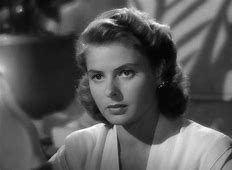I think this is the beginning of a beautiful friendship
Humphrey Bogart to Claude Rains in “Casablanca”
DIRECTOR: Michael Curtiz
BOTTOM LINE: After Ilsa (Ingrid Bergman) and Victor (Paul Henreid) are safely away on their plane and Major Strasser (Conrad Veidt) is dead, Rick (Humphrey Bogart) and Captain Renault (Claude Rains) walk away together into the mist as Rick recites one of the movie’s most famous lines to Louis. For a moment, it is possible to feel that Rick and Louis are really in love, and one of their possible futures is a long and happy life together.
The film takes place in Casablanca, Morocco, with most of the action happening at a tavern called Rick’s, named for the hero of the story, played by Bogart. The plot begins when an old flame, Ilsa Lund (Bergman), suddenly appears with her husband, Victor Laslow (Henreid), who’s wanted by the Nazis. Rick has to decide whether to put aside his feelings for Ilsa to help Victor escape so he can help the Resistance. With Dooley Wilson as Sam, the piano player.

Herman Hupfeld’s song “As Time Goes By” was used to great effect in the movie, and the song’s melody was incorporated into Max Steiner’s famous score and used as a leitmotif throughout the film. However, the song was not written for the movie. It was originally written for the Broadway show “Everybody’s Welcome” in 1931. Arthur Edesen did the gorgeous cinematography.
Written on the fly by the fabulous Epstein twins (Philip and Julius) together with Howard Koch and directed by Michael Curtiz with what can only be described as the hand of God, “Casablanca” is one of the most romantic and enjoyable of all the great Hollywood movies.
The film had its world premiere on November 26, 1942, in New York City to coincide with the Allied invasion of North Africa and was released in Los Angeles and nationally on January 23, 1943, to coincide with the Churchill-Roosevelt Casablanca conference. Hence, according to the AMPAS rules at the time, the film was eligible for the 1943 Academy Awards even though it was released in New York in 1942. At the 16th Academy Awards held at Grauman’s Chinese Theatre on Thursday, March 2, 1944, it won Best Film (Hal B. Wallis producer), Best Director (Curtiz), and Best Adapted Screenplay (the Epstein brothers and Koch). Jack Warner’s run to the podium to accept the award deeply upset Wallis, who resigned from Warner Bros. and formed his production under the Paramount banner.
Adapted from the play “Everybody Comes to Rick’s by Murray Burnett and Joan Alison.
NOW STREAMING ON AMAZON PRIME VIDEO, APPLE TV+, Max (YOUTUBE)
https://thebrownees.net/sixty-five-queer-films-made-under-the-hays-code-1934-1967
https://thebrownees.net/sixty-five-queer-films-made-under-the-hays-code-1934-1967-table-summary
https://thebrownees.net/fifty-two-post-hays-code-queer-films-released-in-the-decade-1967-1976


















